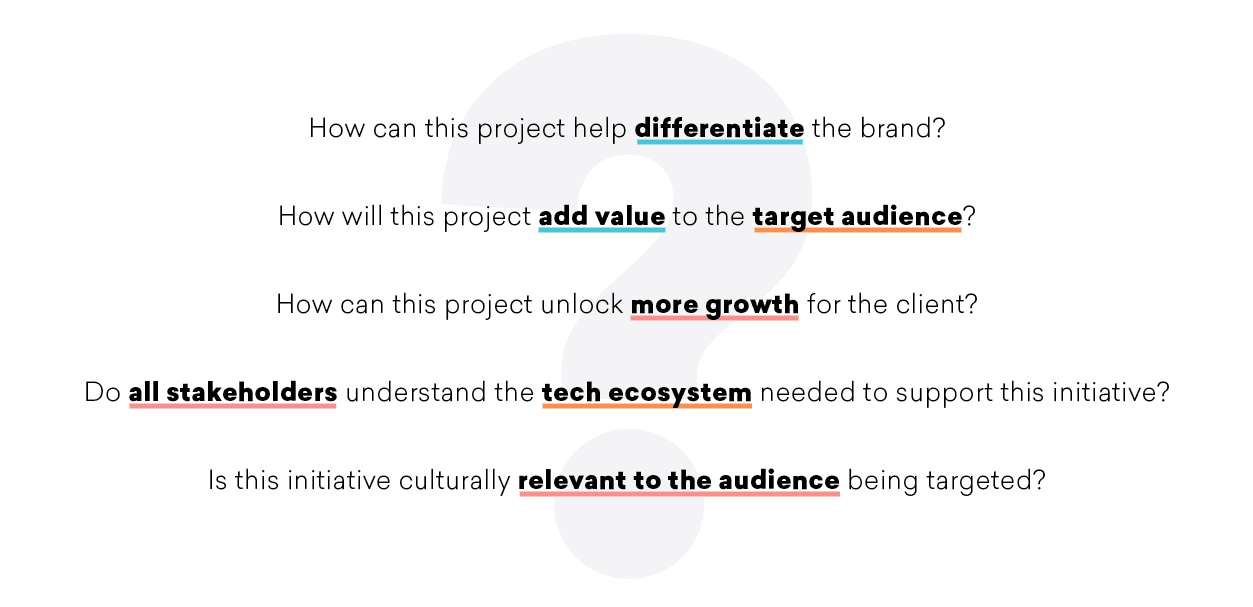Put the Creative in “Creative”: How Agencies Can Handle Today’s Deconstructed Customer Journey
Published on June 27, 2018/Last edited on June 27, 2018/3 min read

Published on June 27, 2018/Last edited on June 27, 2018/3 min read


There’s a shift happening right now, a shift toward embracing technology as central and critical in every aspect of the business landscape. We’ve all heard the buzzwords, but at its core, digital transformation isn’t about a particular technology—it’s about using technology to accomplish things that weren’t possible before.
To dive into how agencies are embracing technology to fuel creativity and set their clients apart in a shifting competitive landscape, we sat down with R/GA’s forward-looking U.S. CTO, Steven Moy. According to Moy, technological “evolution is accelerating, and the pace of innovation is changing.”
Creativity is no longer just about copy, design, and scripts. Staying ahead of the curve requires agencies to be more strategic and innovative in their use of technology. If you save all your creativity for your creative, you won’t be able to keep up.
The rise of technology—from PCs to mobile devices to emerging platforms—has made it possible to capture more meaningful customer data than ever before, and to use that information to gain a profound, multi-dimensional understanding of consumers as individuals with distinct wants and needs. It’s not about knowing that a customer visited a client’s website or made a purchase; it’s about understanding what those actions mean for each customer’s relationship with that brand.
Less is more. It’s not about bombarding your target audience with communication. It’s about precision...By doing less, with higher personalization, the conversion rate is much higher.
US CTO, R/GA
That’s incredibly powerful, but it also represents a major shift for a lot of agencies and brands. The days when you could engage 80% of your target audience with a single TV spot are long gone. You can’t just reflexively favor any individual channel; you need to start by identifying the specific goal you’re trying to reach, then use data to pinpoint the content and platform that fits your target audience in a given moment or situation.
Today’s nuanced customer data supports better targeting and more effective personalization. But that doesn’t necessarily mean more personalization. “Less is more,” Moy explained. “It’s not about bombarding your target audience with communication. It’s about precision...By doing less, with higher personalization, the conversion rate is much higher.” Consumers are looking for the brands they patronize to make their lives better and easier; if you aren’t reinforcing that value, it’s time to rethink things.
Dreaming up a stunning ad or attention-grabbing cross-channel messaging campaign takes hard work and creativity. But too often, agencies find themselves coming up with bold ideas on paper that prove to be difficult or even impossible to implement. To avoid that, take a page from the R/GA playbook and start projects by leveraging cross-departmental teams and ensuring you have cross-team clarity on six central questions that can make the difference between success and failure:

You can see the fruits of this approach in R/GA’s recent work with Nike. By leveraging customer data to identify ideal exercise times, R/GA effectively used technology to nudge Apple Watch users to take runs on Sundays. Because the experience and the messaging supporting it were built right into the new Apple Watch, the initiative created a frictionless, phone-free exercise option that showcased the Nike+ ecosystem and encouraged increased consumer engagement with the Nike brand.
“Brands need to think of an ecosystem of products and services that they can provide,” said Moy, “adding value throughout the user journey to retain [customers] and nurture them and build loyalty.” Otherwise, he added, “someone else will steal them.”
Brands need to think of an ecosystem of products and services that they can provide, adding value throughout the user journey to retain [customers] and nurture them and build loyalty. Otherwise, someone else will steal them.
US CTO, R/GA
Sign up for regular updates from Braze.





